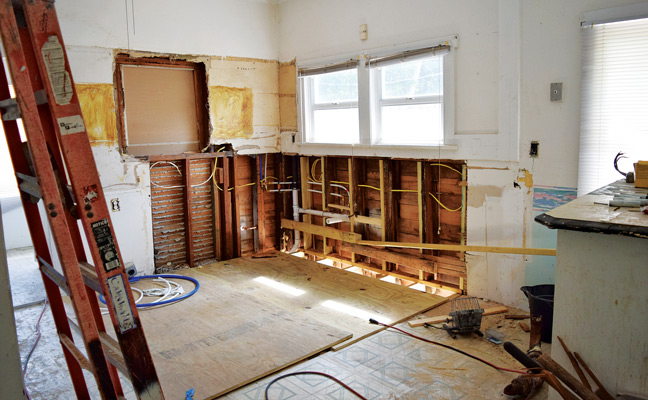
PHOTO: ISTOCK.COM/LISA5201
The practice of “flipping houses,” or purchasing a home with the sole intention of reselling it shortly thereafter at a profit, has become increasingly popular. How “flippers” do this may vary, but the practice usually involves conducting some level of home improvements to ready the house for a quick sale. It’s really a simple and effective plan for the flipper — those who are good at it can make a lot of money. Look no further than the plethora of reality shows focusing on flippers as they redo home after home.
But house flipping can blindside a pest management professional (PMP), especially when dealing with termite/wood-destroying organism (WDO) inspections. The flipper needs a “clean” report so that the house may be sold without issue.
These folks are in the business of purchasing undervalued homes, fixing them up and selling them to make a profit. Sometimes these “fixer-uppers” have termite activity and resulting damage. When they do, the flipper must deal with this damage such that the inspection report indicates there is no termite activity or damage present. And as with anything else, some flippers are ethical and some — not so much.
Have you ever conducted an inspection, provided your report and quote for the proposed treatment, and the customer chose another professional to do the work? Many have had this experience, but with a flipper, the story can transpire a little differently. For illustration purposes, let’s call our (slightly unethical) flipper Fred.
Fred asks PMP No. 1 to inspect his home, and then provide a written report and a proposal quote for the termite treatment. Upon receipt of these materials, Fred asks several questions to learn where all the telltale signs of termite activity are located and what repairs need to be done. This information may be all Fred really wants from PMP No. 1.
It is PMP No. 2 who is about to hit the proverbial iceberg, however: By the time he arrives, Fred already has completed the repairs. Thus, the termite/WDO inspection report provided by PMP No. 2 is “clean,” or indicates “no termite evidence found.” The reality, though, is that Fred merely hid the areas of termite activity; he did not fully repair them.
This happens more often than you might think.
Don’t let Fred fool you
Before any termite/WDO inspection, conduct an online search of the structure’s address. Doing so provides some key information including, but not limited to:
- When the structure was built.
- The square footage of the structure.
- The estimated current value of the structure.
- When the house was last sold.
- Whether the structure currently is on the market.
Ask the owner relevant questions, including:
- How long have you owned the house?
- Why do you need an inspection?
- Have you had a termite or WDO problem at this home before?
- Was the house recently inspected by another professional?
- What are your long-term plans for this house?
If your homework turns up a possible “Fred,” don’t hesitate to delve further. Ask questions like:
- We saw online that you just purchased this house 30 days ago. Why are you having it inspected now?
- Did you have the house inspected when you purchased it?
Eyes wide open
Healthy skepticism is beneficial in these situations. For example, when homeowners are selling a house they have owned only for a short time, and the house appears to have been recently remodeled and/or painted, there’s a good chance you’re dealing with flippers. Remember, most flippers won’t care about you or the long-term care of this structure. Their primary motivation is to sell this home for a profit.
While conducting your inspection, keep an eye on the big picture as well. Not only do you need to look for telltale signs of termite/WDO activity, but you also need to make note of renovations, fresh paint, new molding and other such finish work. Note that if a significant portion of the interior has been refinished, this should give you pause as to why these renovations or repairs have been made.
Going back to unethical Fred, the true danger here happens after he leaves, with a clean WDO report in hand. New homeowners will have closed on the house and moved in. As is often the case, the new occupants start to make changes to the house themselves — replacing windows, doors, etc.
During such renovations, the termite/WDO damage Fred had superficially hidden during the previous inspection come to light. If this happens and the damage is significant, this could become a claim for PMP No. 2 — which deteriorates into an even worse situation.
Protect yourself every step of the way, not only with the questions and research conducted before the inspection, but by also implementing the following as part of your inspection process:
-
- In your report, include the attic, basement and crawlspace where damaged areas and repairs may be seen.
- Take digital photos to document your inspection findings.
- Include the customer’s answers to your questions (as noted earlier) in your inspection documentation.
- Consider the addition of a “sellers assertion” as part of your inspection documentation.
This document would include a statement that there were no areas of termite/WDO activity or damage which were purposefully hidden from you during the renovation and repair work. Of course, you need a suitably experienced attorney to compose and/or review such verbiage prior to adding it to your inspection report documents.
If your gut feeling is that you’re dealing with a Fred, it’s OK to walk away from the account. There are plenty of ethical flippers looking for your business.
Cases in point
Author’s Note: These photos were taken during the inspection of a flipped home. They are examples of what to look for during inspections.
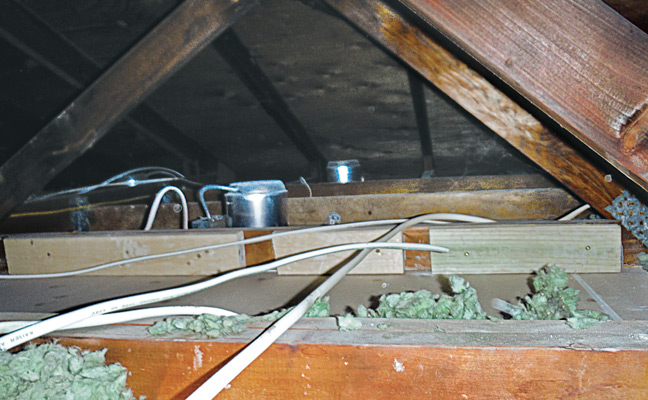
PHOTO: PAUL BELLO
Photo 1. New wood is attached to damaged wood found in the attic. Note that to find such physical evidence during an inspection, it is necessary to inspect the attic.
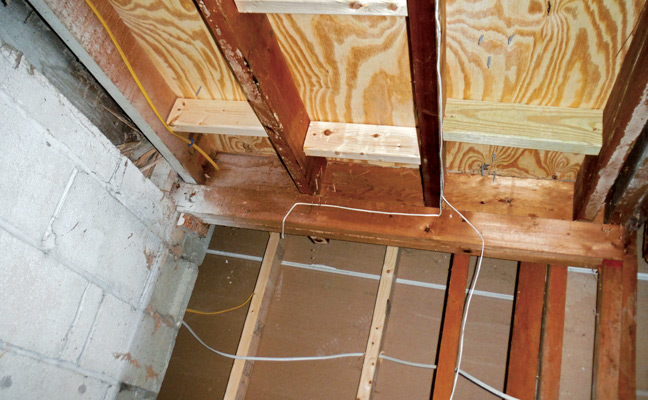
PHOTO: PAUL BELLO
Photo 2. New wood attached to, and immediately adjacent to, termite-damaged wood in a crawlspace area.
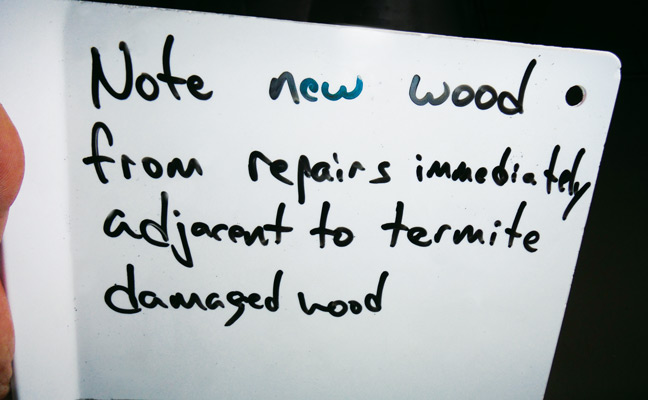
PHOTO: PAUL BELLO
Photo 3. A whiteboard is a useful way to document inspection photos.
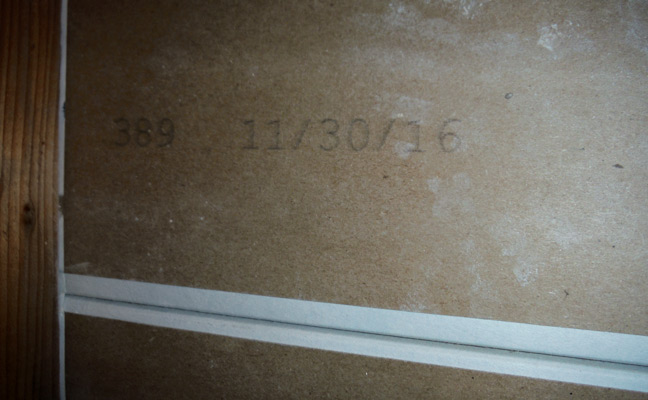
PHOTO: PAUL BELLO
Photo 4. Sheetrock or drywall that is date-stamped is a clear indication that renovations have been made on a certain date. Recent renovations, as seen here, may be cause for concern.
Leave A Comment